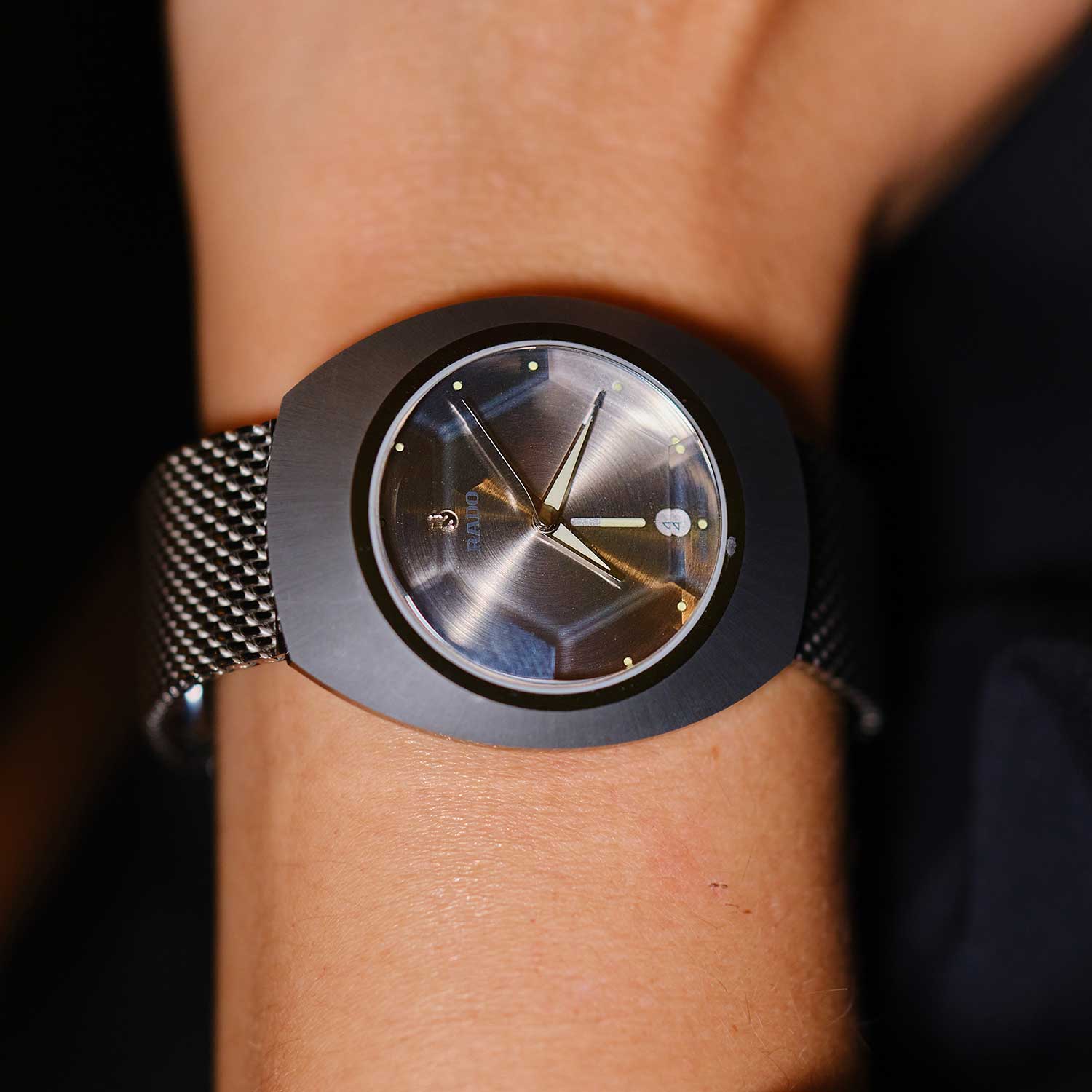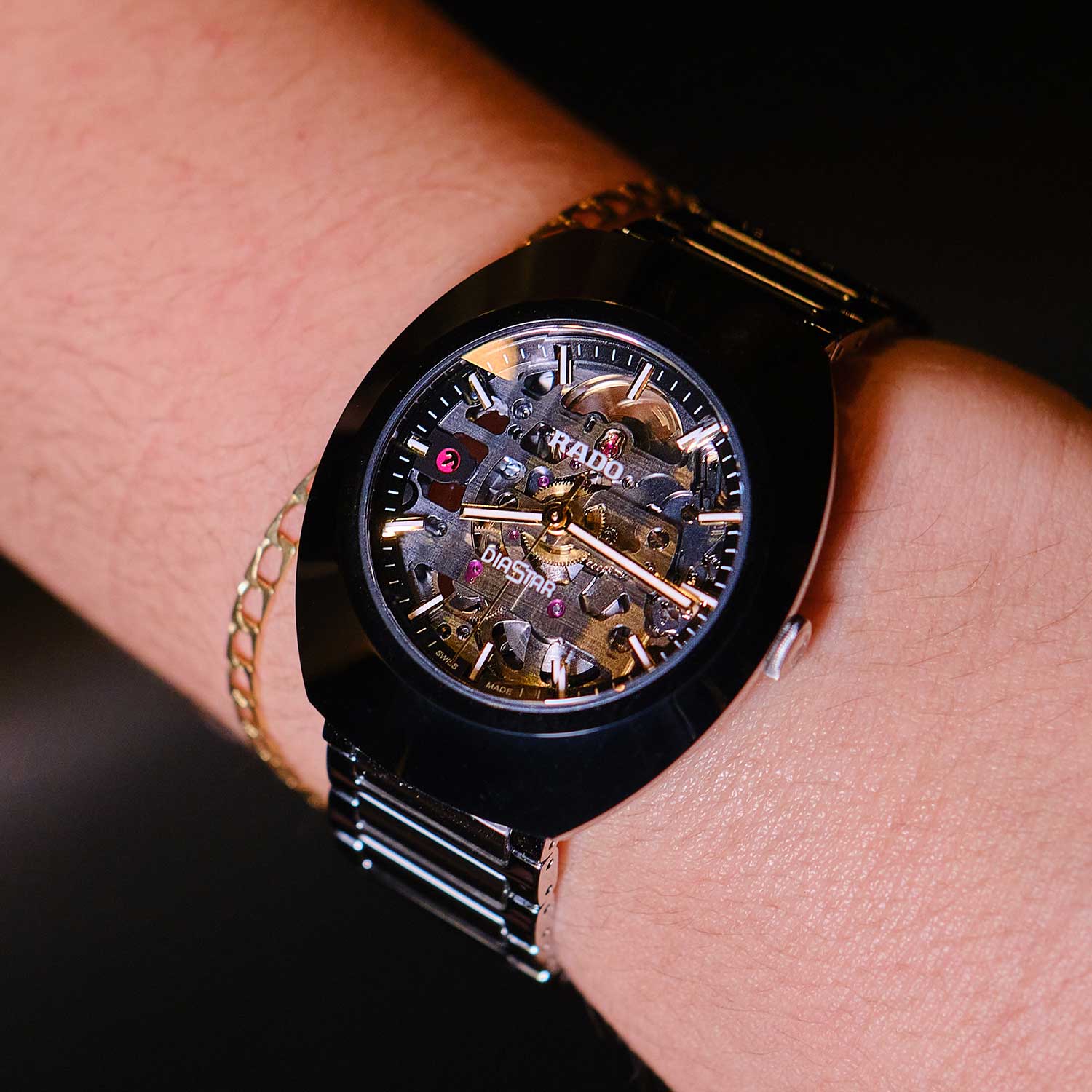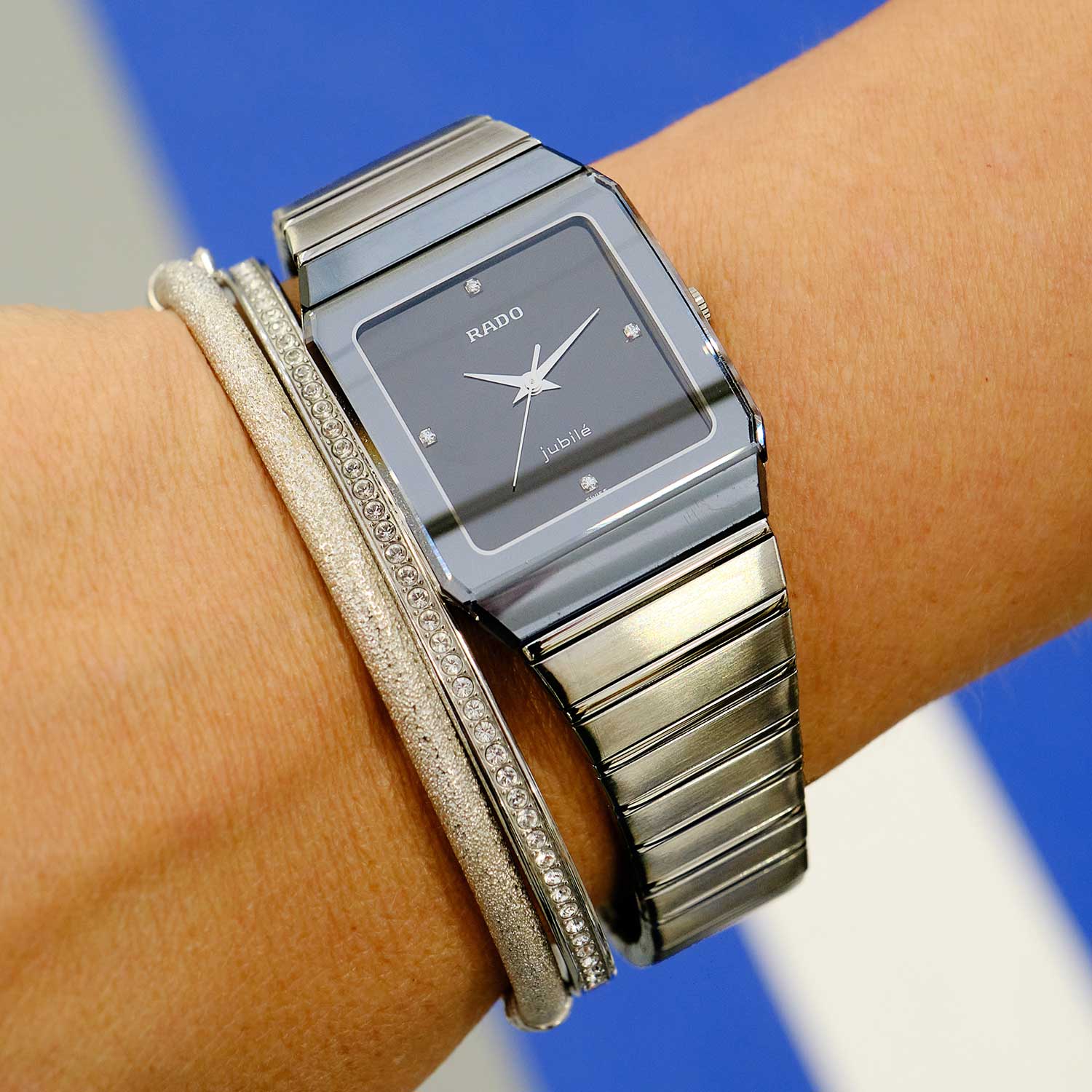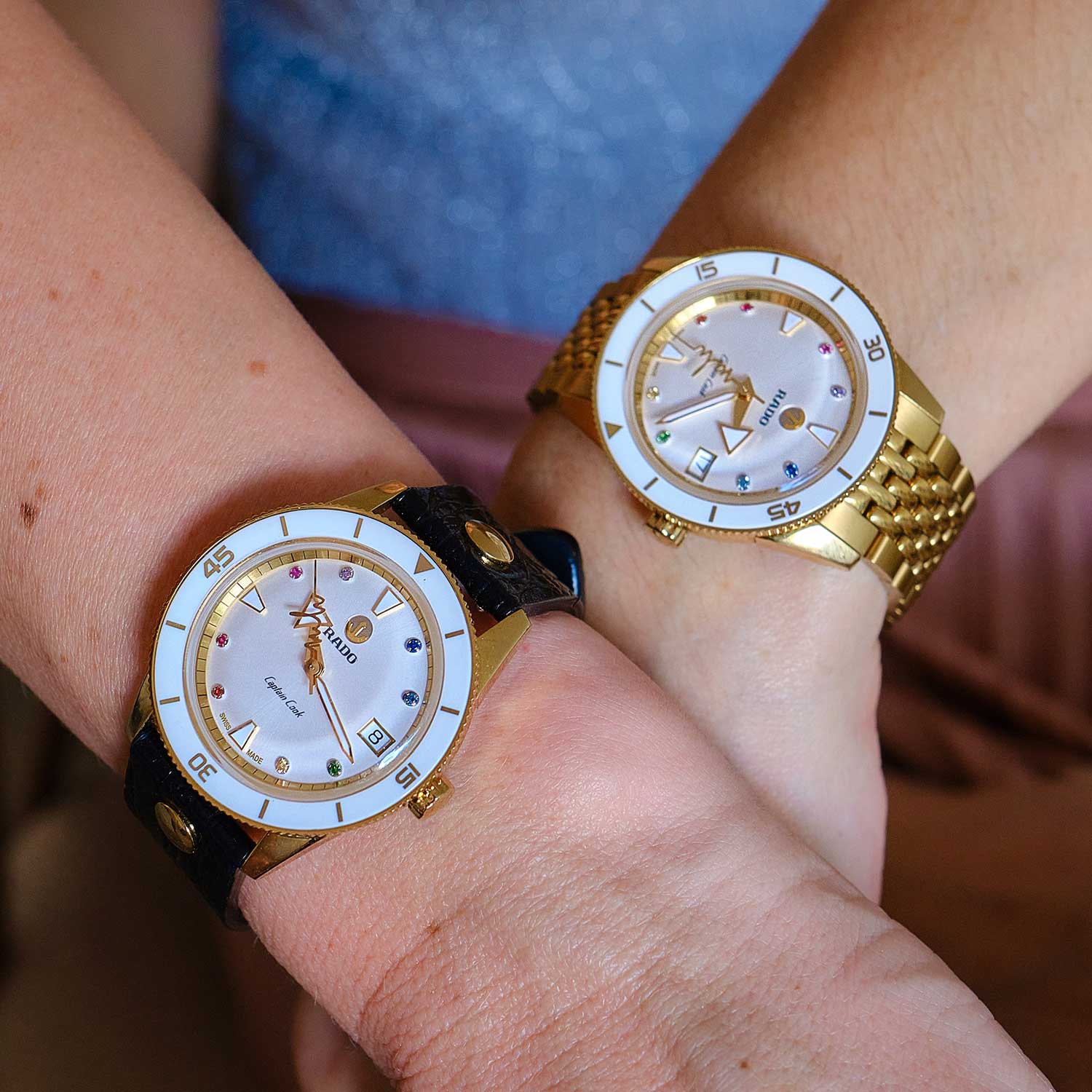How the new Rado Anatom reveals the heart of one of Switzerland’s most enigmatic watch brands.
Rado is a brand built upon three pillars – history of design, history of materials innovation, and the dedication and warmth of the people who work there. Now, on the surface, the same could be said of many companies. Especially in the watch industry, heritage is sometimes more essential than the watches themselves, with carefully crafted narratives being foisted on the public with fervor and desperation. But with the re-release of the Anatom, Rado’s 1983 cult classic rectangular timepiece, which curved to effortlessly fit the natural contours of the wrist, the brand reminds us all what a heritage company is truly made of – Ceramic… well, that, and oh so much more.
Last week, the world’s creative forces descended upon Miami’s South Beach in what has become one of the key weeks of the year for the Art world: Miami Art Week. Within one of the 20 plus art fairs, the mysteriously titled ‘Untitled Art Fair’, Rado revealed the return of the Anatom – a 32.5mm x 46.3mm ceramic watch with colored degrade lacquered dials, accompanied seamlessly by an ultra-soft rubber strap and sophisticated hidden deployant ceramic clasp cover. It’s a remarkably sleek, sporty, and elegant reinterpretation of a watch that, up until now, was very much emblematic of its day.
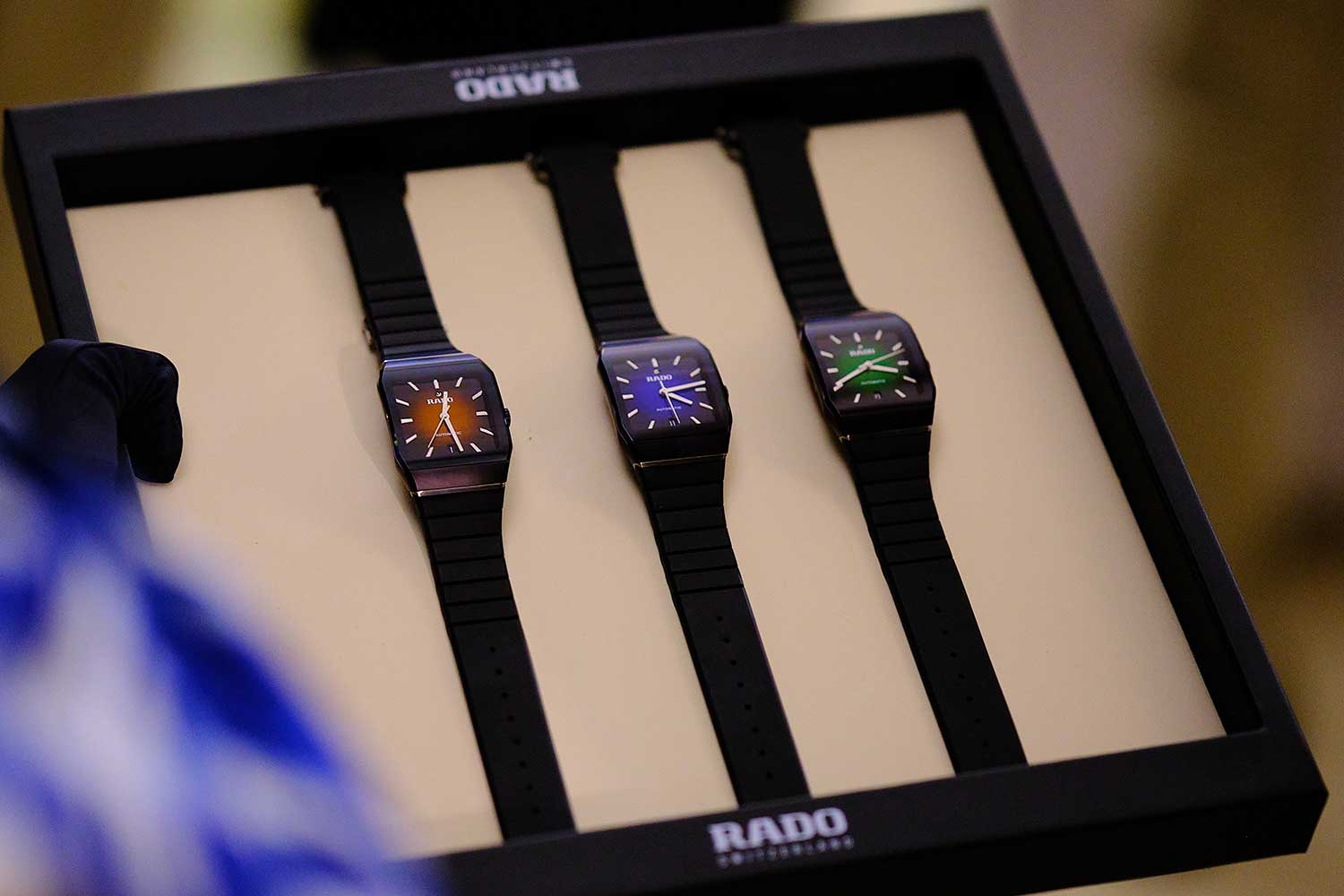
It’s an update that strikes a remarkable balance between paying homage to a classic and updating it for the modern market and modern consumer. Too much to the past, and the watch becomes a retread, to much the present, and it risks losing that which made it special in the first place. It’s a balance that Rado CEO Adrian Bosshard takes extremely seriously. “Of course we have to develop. We cannot stay on the same technology, and when you see the Anatom (in) 1983 and you see the Anatom (in) 2023 you see it’s an inspiration from this product,” Mr, Bosshard said in an interview while in Miami, “It’s exactly in [the same] design code [as the original] but here you have a product which is developed with the most modern technology of the watch industry.”
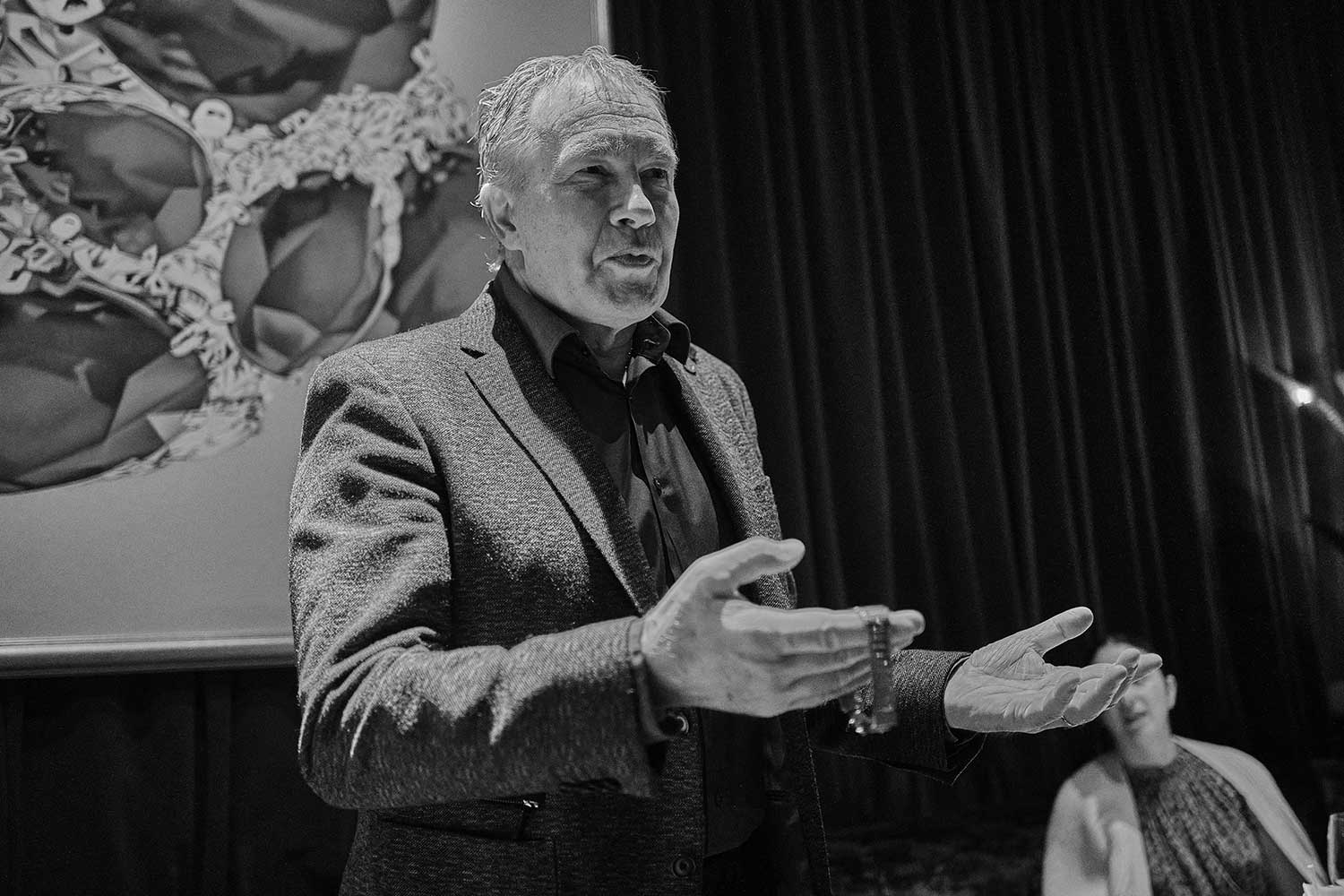
Rado CEO Adrian Bosshard
As the industry at large has continued the borderline obsession with vintage inspired watches and retro homages, Rado has continued to stick to their aesthetic guns. Pieces like the DiaStar, Captain Cook, and now Anatom, recall a certain flair and a individuality that Rado is singularly known for. “We have design codes that are so strong and so appreciated and so commercially [successful] that it would be a crime to change [but] of course we have to develop, we cannot stay on the same technology.”
This technology, of course, refers not only to movements (here, it’s the Rado calibre R766, which is derived from the ETA 2892), but of course also to the ceramic case material for which Rado has become almost singularly known, having released the 1962 DiaStar made of tungsten carbide and later introducing what’s now known as “high-tech ceramic” in its 1986 Integral. With the combination of modern materials, techniques, and styling, all the while staying true to their own design codes has ensured that Rado maintains its own identity in an ever increasingly crowded and competitive marketplace.
The new Anatom is a surprisingly compelling watch, with its striking gradient dials – not to mention the Anatom Limited Edition, which features a black lacquered dial and 11 baguette cut diamond indices. The watches were given a suitably glamorous launch, an event which spanned 3 days and included a dinner at Queen Miami Beach, followed by launch party in the private lounge at the Untitled Art Fair, overlooking a dramatic sunset on South Beach. But as dazzling as all of this was, complete with runway models and brand ambassadors, the most impactful part of the entire affair was the people.
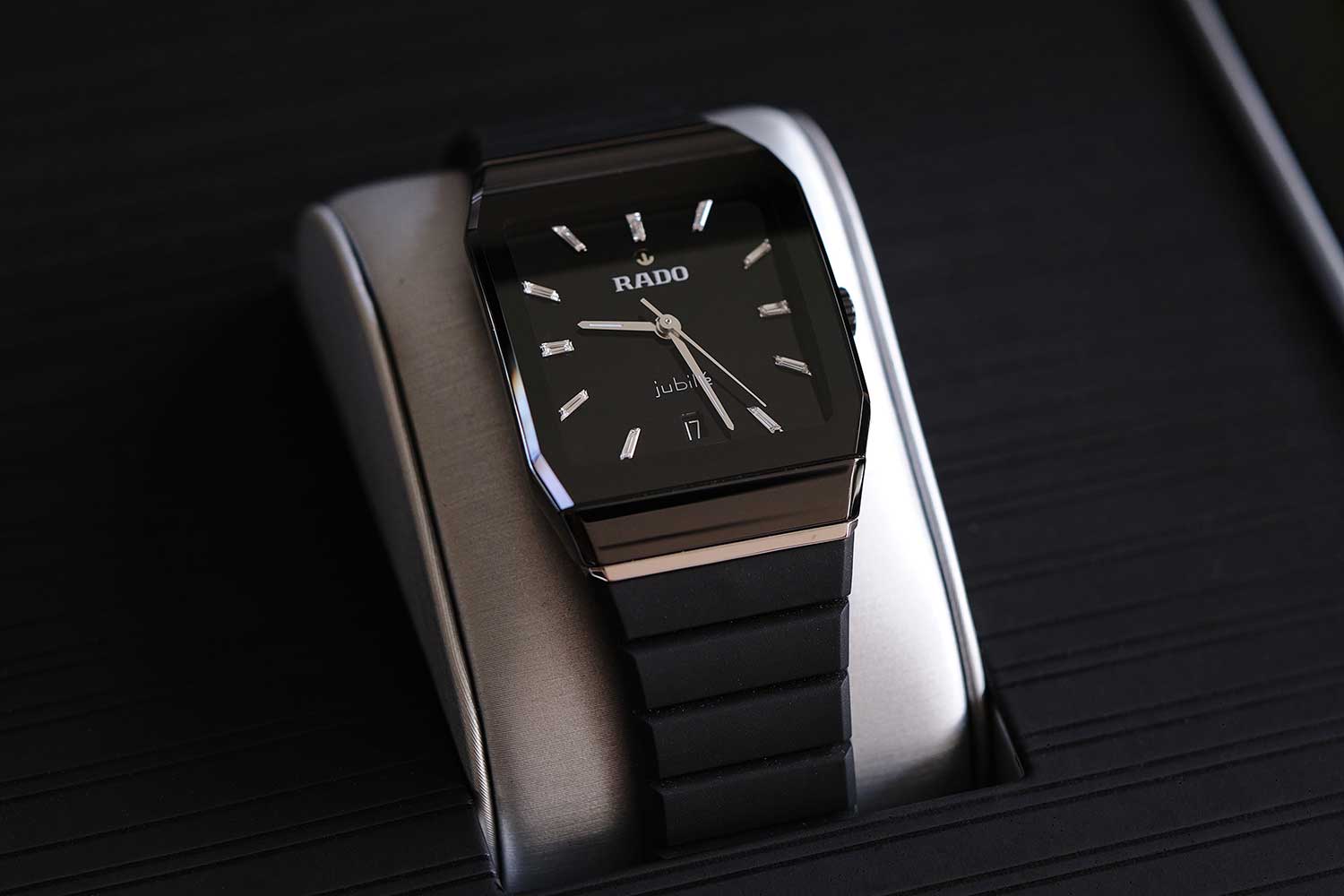
You see, the passion and genuine dedication to the brand and its pieces is not limited to the gregarious Mr. Bosshard alone. On the contrary, his enthusiasm feels almost like a reflection of his team, from the top down. The team from Rado who arranged the events, planned the dinners, organized the travel, and ultimately attended the events themselves, all brought a warmth and genuine care to the launch, that it was impossible to not be similarly enchanted.
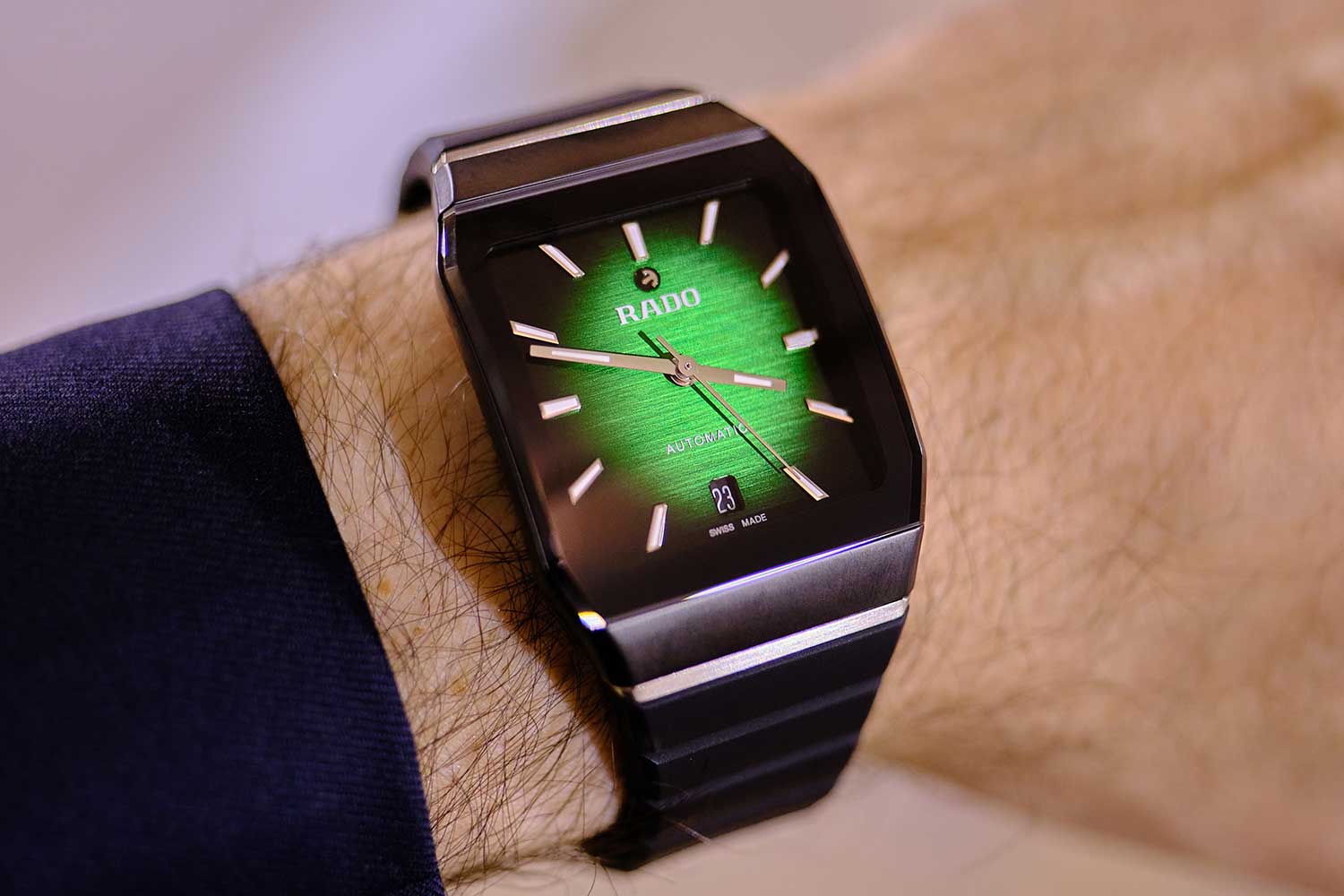
Even today, Mr. Bosshard says that the team takes the time to maintain their connection with their predecessors, gathering each year with those retired individuals who worked at Rado in previous generations. “We have to say thank you to all these guys that gave us the template for this strong brand and strong DNA, It’s up to us now to work on this, stay hungry and motivated like it was in the past, and to respect what they did, but to also be pioneers [ourselves] enough to bring in new customers.” Such a grounded, humanistic approach to not only watch design, but the whole business of running a watch company, can be felt. It can be felt in the care that each person puts into such a monumental launch, and it can be felt in the watches themselves, which will inevitably become as treasured today as their predecessors were.


